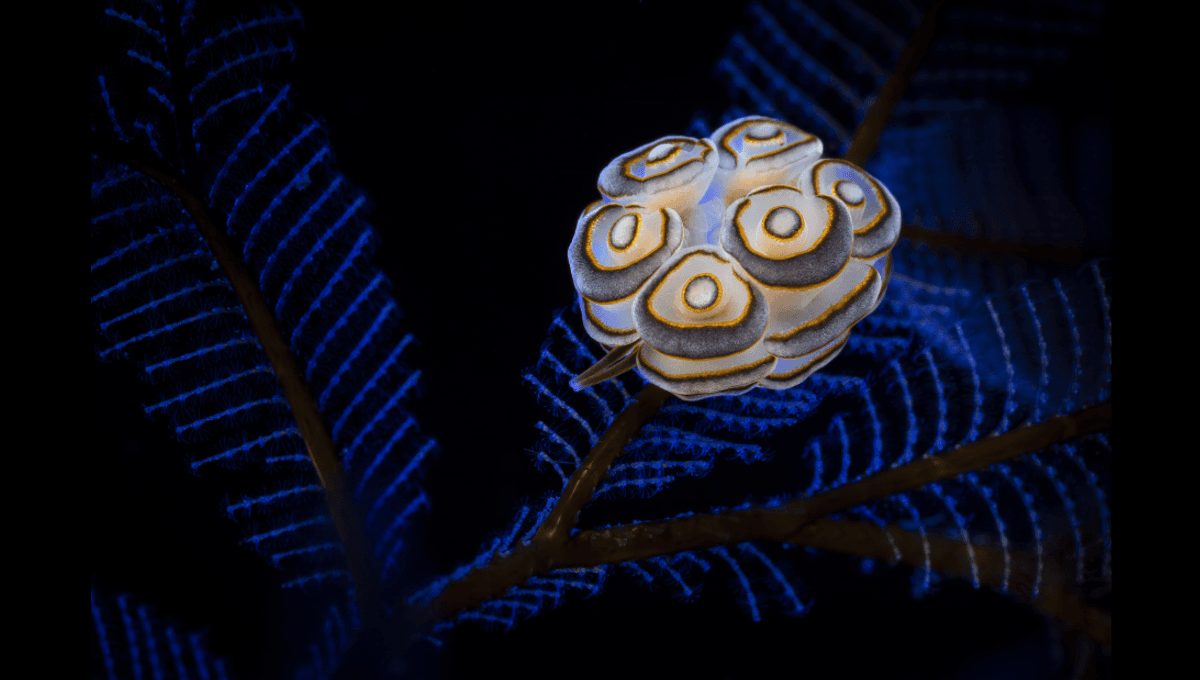
Imagine swimming through the waters of Bali when you spot a bouquet of donuts shuffling along, the ghostly-white tissue of its squashy body seemingly coiled into six perfect ringlets that line the alien-like critter’s back. You’ve just encountered Doto greenamyeri, and it’s a real weirdo.
ADVERTISEMENT
Nicknamed the donut sea slug for obvious reasons, this nautical nudibranch recently starred in Bryan Blauvelt’s Underwater Photographer of the Year Macro Runner-Up-Winning image, Dazzling Donut Doto. Blauvelt was diving off Tulamben when he spotted the animal, and used a few tricks of the light to create an otherworldly image.
“I wanted to leave this inspirational place with a unique image of Doto greenamyeri, one of the most striking subjects in Tulamben,” said Blauvelt in a statement. “I created a dramatic glowing effect on the nudibranch with my strobe and snoot, and completed the frame by backlighting the host hydroid with subtle blue light to balance the composition. Thank you to my incredible guide Rudolfi Sikome at Alam Batu for holding a torch in position for the backlighting effect on this image, and for a productive and fun week of photography!”
In 2015, Doto greenamyeri was among nine colorful new nudibranchs described by world-renowned expert Dr Tery Gosliner. Alongside the pink-and-orange Doto splendidisima, it was discovered in southern Africa, a region with diverse temperate marine environments that boast remarkable sea slug richness.
Doto sea slugs feed by piercing the stems of hydroids and sucking out their internal fluids. Those flashy “donuts” are what’s known as cerata, floppy projections that are found on aeolid nudibranchs but that come in very different shapes and sizes. They contain branches of the digestive system, and in some species of sea slug end in what’s called a cnidosac – a place where they can store the stinging nematocysts of the cnidarians they eat.
It’s similar to how some sea slugs have evolved to take chloroplasts from the algae they eat via what is known as kleptoplasty, subsisting off sunlight – which also could be how other species could facilitate the ability to decapitate their heads and grow a whole new body.
ADVERTISEMENT
Suddenly wearing a bunch of donuts on your back doesn’t seem so strange, huh?
Source Link: Meet Doto greenamyeri, The Out-Of-This-World Sea Slug With "Donuts" On Its Back